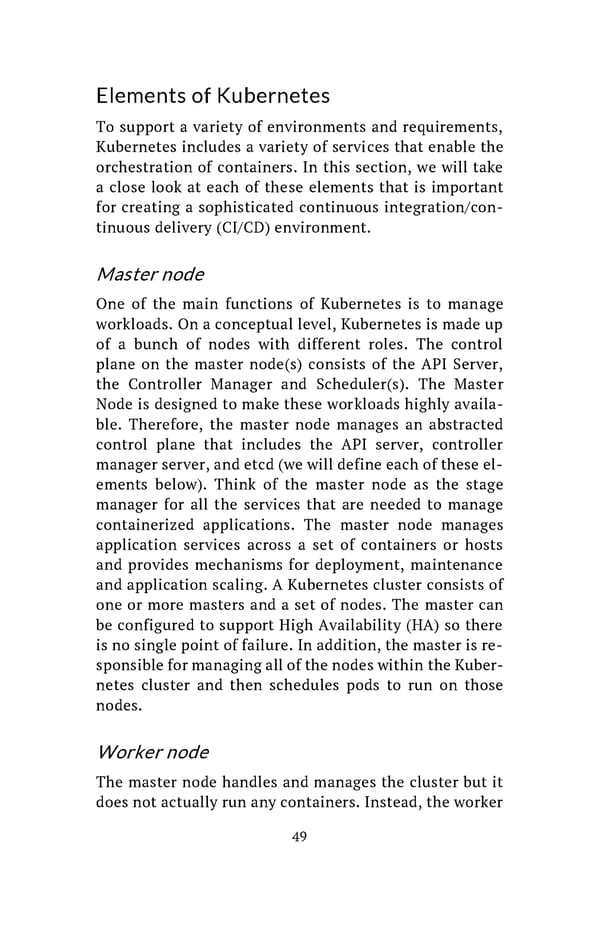Elements of Kubernetes To support a variety of environments and requirements, Kubernetes includes a variety of services that enable the orchestration of containers. In this section, we will take a close look at each of these elements that is important for creating a sophisticated continuous integration/con- tinuous delivery (CI/CD) environment. Master node One of the main functions of Kubernetes is to manage workloads. On a conceptual level, Kubernetes is made up of a bunch of nodes with different roles. The control plane on the master node(s) consists of the API Server, the Controller Manager and Scheduler(s). The Master Node is designed to make these workloads highly availa- ble. Therefore, the master node manages an abstracted control plane that includes the API server, controller manager server, and etcd (we will define each of these el- ements below). Think of the master node as the stage manager for all the services that are needed to manage containerized applications. The master node manages application services across a set of containers or hosts and provides mechanisms for deployment, maintenance and application scaling. A Kubernetes cluster consists of one or more masters and a set of nodes. The master can be configured to support High Availability (HA) so there is no single point of failure. In addition, the master is re- sponsible for managing all of the nodes within the Kuber- netes cluster and then schedules pods to run on those nodes. Worker node The master node handles and manages the cluster but it does not actually run any containers. Instead, the worker 49
 Building Cloud Native Apps Painlessly Page 54 Page 56
Building Cloud Native Apps Painlessly Page 54 Page 56